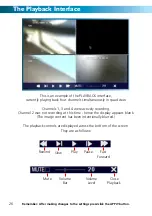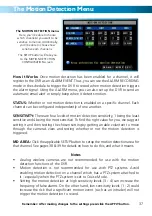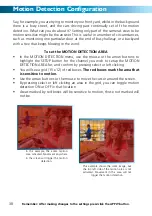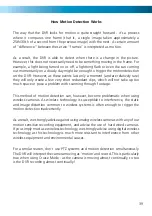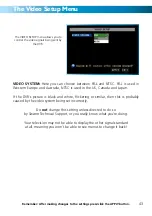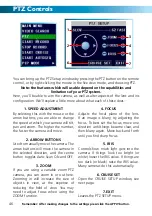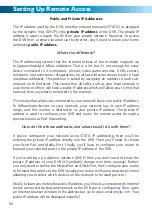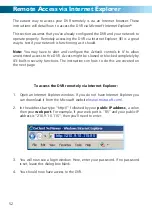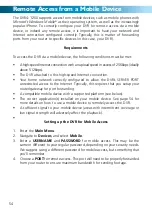
39
How Motion Detection Works
The way that the DVR looks for motion is quite straight forward - it’s a process
where it compares one frame (that is, a single image taken approximately a
25th/30th of a second from the previous image) with the next. A certain amount
of “difference” between these two “frames” is interpreted as motion.
As a result, the DVR is able to detect when there is a change in the picture.
However, this does not necessarily need to be something moving in the frame. For
example, a light being turned on or off, a lightning flash or even the sun coming
out momentarily on a cloudy day might be enough to trigger the motion detection
on the DVR. However, as these events last only a moment (and are relatively rare)
they will only create a few very short redundant clips, which will not take up too
much space or pose a problem with scanning through footage.
This method of motion detection can, however, become problematic when using
wireless cameras. As wireless technology is susceptible to interference, the static
and image distortion common to wireless systems is often enough to trigger the
motion detection inadvertently.
As a result, we strongly advise against using analog wireless cameras with any of our
motion sensitive recording equipment, and advise the use of hard wired cameras.
If you simply must use wireless technology, we strongly advise using digital wireless
technology, as this technology is much more resistant to interference from other
wireless equipment and environmental causes.
For a similar reason, don’t use PTZ systems and motion detection simultaneously.
The DVR will interpret the camera moving as ‘motion’ and record. This is particularly
true when using Cruise Mode - as the camera is moving almost continually, so too
is the DVR recording almost continually!


